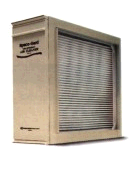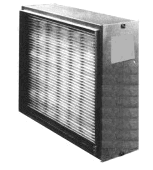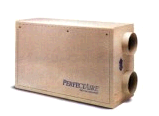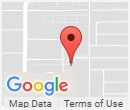Ultimate Air, Inc
Wisconsin ,
 United States
(+1) 920 845-2062
http://www.comfortbyultimateair.com
United States
(+1) 920 845-2062
http://www.comfortbyultimateair.com
Ultimate Air, Inc - Luxemburg
Ultimate Air, Inc. is a premier heating and air-conditioning company which was started in 2007. Located in Luxemburg, WI, we hire experienced people whose objective is to make our business the very best service company in Brown, Kewaunee & Door Counties.
Our company specializes in designing, and setting up complete comfort systems for owners of homes and buildings. We take special pride in the craftsmen whom we train and employ. Our entire business works hard to make your experience with us hassle-free and enjoyable. If you are not satisfied with our performance, we will work hard until you get complete satisfaction.
From the professionalism of our Comfort Consultants, to the dedication of our industry personnel, we're dedicated to delivering you the most effective. We just take our duty really seriously once you spot your trust in us. We pledge to always inform you up front what your price is to complete your work precisely. We will provide you detailed information about your system. You might be told exactly what to anticipate in advance. At Ultimate Air, Inc. we follow the following philosophy:
“If at any time during the first year of installation, you're not 100% satisfied with the performance of our service or technicians, we shall, within thirty days of the demand, correct the problem or remove the system and cheerfully refund the complete amount of the contract.”
Ultimate Air, Inc. continues to grow with an increase of happy clients every year. Our highly trained staff will always stand behind you providing reliable and prompt service. Call (920) 845 2062 for your service needs.
| Business Operation Hours | ||
| Monday |
9:00 AM to 5:00 PM |
|
| Tuesday |
9:00 AM to
5:00 PM
| |
| Wednesday |
9:00 AM to 5:00 PM |
|
| Thursday |
9:00 AM to 5:00 PM |
|
| Friday |
9:00 AM to 5:00 PM |
|
| Saturday |
Closed |
|
| Sunday |
Closed |
|
 HVAC Services
HVAC Services
Most heating and cooling systems still use a basic air filter. These filters were originally designed to protect the equipment and not the people served by the equipment. The average air filter is only capable of removing 3–5% of the particles that pass through it. Today, however, there are several types of permanent air filters available in various efficiencies that can help you filter the air in your home. If you suffer from allergies, asthma, hay fever or other breathing difficulties, there is an air filter that can help you. We can even provide you with the same type of air filter used in hospital operating rooms.
Not too long ago, carbon monoxide detectors were only for people who had sophisticated alarm systems in their homes. Today most every family is aware of the dangers of carbon monoxide poisoning and have at least one CO detector in their home. The smartest families have CO detectors installed on every level of their home, including one next to their heating equipment. This is the safest way to protect your family from deadly carbon monoxide poisoning.
A digital setback thermostat is designed for people with fixed schedules that take them in and out of the home. With it, you can program the temperature to ‘set-back’ when you are not at home. This feature keeps you comfortable when you’re home and saves you money when you’re not by reducing the energy needs to heat and cool your home.
Digital setback thermostats are available in what are called 5+2 day configurations and 7-day configurations. The difference is flexibility. A 5+2 day configuration allows you to set Monday–Friday as a group setting with up to four different time settings. This configuration also allows you to set Saturday and Sunday as a separate group with up to four different time settings per day. The 7-day configuration thermostat allows you to program each day differently with up to four different time settings per day.
The U.S. Consumer Product Safety Commission (CPSC) is alerting consumers to possible health hazards resulting from dirty room humidifiers. The CPSC has found that bacteria and fungi often grow in the tanks of portable and console room humidifiers and can be released in the mist. Breathing dirty mist may cause lung problems ranging from flu-like symptoms to serious infection. This information is of special concern to allergy or asthma sufferers whose symptoms may be increased.
Film or scum appearing on the water surface, on the sides or bottom of the tank, or on exposed motor parts may indicate that the humidifier tank contains bacteria or fungi. A crusty deposit or scale may also form within the tank or on parts in the water. This scale is composed of minerals that have settled out of the water creating a surface on which bacteria or fungi may grow.
Minerals can also be released in the mist and settle as fine white dust. This white dust may contain particles that are small enough to enter the lungs. The health effects from inhaling this humidifier dust are not clear, any impact on human health will depend upon the types and amounts of minerals found in the water used.
 Additional Information
Additional Information
Of the three, the first approach -- source control -- is the most effective. This involves minimizing the use of products and materials that cause indoor pollution, employing good hygiene practices to minimize biological contaminants (including the control of humidity and moisture, and occasional cleaning and disinfection of wet or moist surfaces), and using good housekeeping practices to control particles.
The second approach -- outdoor air ventilation -- is also effective and commonly employed. Ventilation methods include installing an exhaust fan close to the source of contaminants, increasing outdoor air flows in mechanical ventilation systems, and opening windows, especially when pollutant sources are in use.
The third approach -- air cleaning -- is not generally regarded as sufficient in itself, but is sometimes used to supplement source control and ventilation. Air filters, electronic particle air cleaners and ionizers are often used to remove airborne particles, and gas adsorbing material is sometimes used to remove gaseous contaminants when source control and ventilation are inadequate.
Another approach to lowering the concentrations of indoor air pollutants in your home is to increase the amount of outdoor air coming indoors. Most home heating and cooling systems, including forced air heating systems, do not mechanically bring fresh air into the house. Opening windows and doors, operating window or attic fans, when the weather permits, or running a window air conditioner with the vent control open increases the outdoor ventilation rate. Local bathroom or kitchen fans that exhaust outdoors remove contaminants directly from the room where the fan is located and also increase the outdoor air ventilation rate.
It is particularly important to take as many of these steps as possible while you are involved in short-term activities that can generate high levels of pollutants--for example, painting, paint stripping, heating with kerosene heaters, cooking, or engaging in maintenance and hobby activities such as welding, soldering, or sanding. You might also choose to do some of these activities outdoors, if you can and if weather permits.
Advanced designs of new homes are starting to feature mechanical systems that bring outdoor air into the home. Some of these designs include energy-efficient heat recovery ventilators (also known as air-to-air heat exchangers).
There are many types and sizes of air cleaners on the market, ranging from relatively inexpensive table-top models to sophisticated and expensive whole-house systems. Some air cleaners are highly effective at particle removal, while others, including most table-top models, are much less so. Air cleaners are generally not designed to remove gaseous pollutants.
The effectiveness of an air cleaner depends on how well it collects pollutants from indoor air (expressed as a percentage efficiency rate) and how much air it draws through the cleaning or filtering element (expressed in cubic feet per minute). A very efficient collector with a low air-circulation rate will not be effective, nor will a cleaner with a high air-circulation rate but a less efficient collector. The long-term performance of any air cleaner depends on maintaining it according to the manufacturer's directions.
Another important factor in determining the effectiveness of an air cleaner is the strength of the pollutant source. Table-top air cleaners, in particular, may not remove satisfactory amounts of pollutants from strong nearby sources. People with a sensitivity to particular sources may find that air cleaners are helpful only in conjunction with concerted efforts to remove the source.
Over the past few years, there has been some publicity suggesting that houseplants have been shown to reduce levels of some chemicals in laboratory experiments. There is currently no evidence, however, that a reasonable number of houseplants remove significant quantities of pollutants in homes and offices. Indoor houseplants should not be over-watered because overly damp soil may promote the growth of microorganisms which can affect allergic individuals.
At present, EPA does not recommend using air cleaners to reduce levels of radon and its decay products. The effectiveness of these devices is uncertain because they only partially remove the radon decay products and do not diminish the amount of radon entering the home. EPA plans to do additional research on whether air cleaners are, or could become, a reliable means of reducing the health risk from radon. EPA's booklet, Residential Air-Cleaning Devices, provides further information on air-cleaning devices to reduce indoor air pollutants.
 Languages Spoken
Languages Spoken
English
 Payment Options
Payment Options
 Visa
Visa Master Card
Master Card Cash
Cash Check
Check









Write a review for Ultimate Air, Inc
* Review Title
* Review